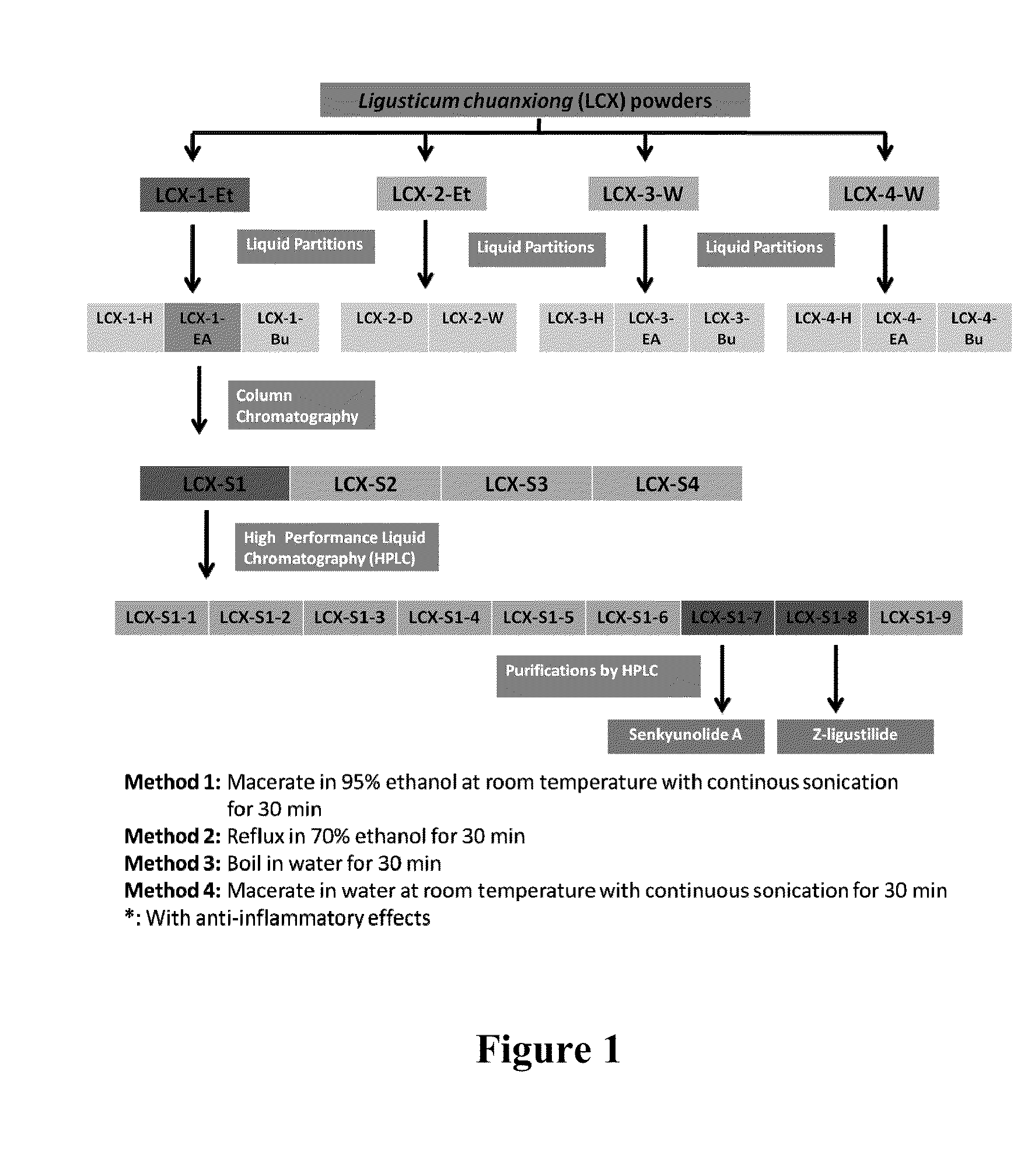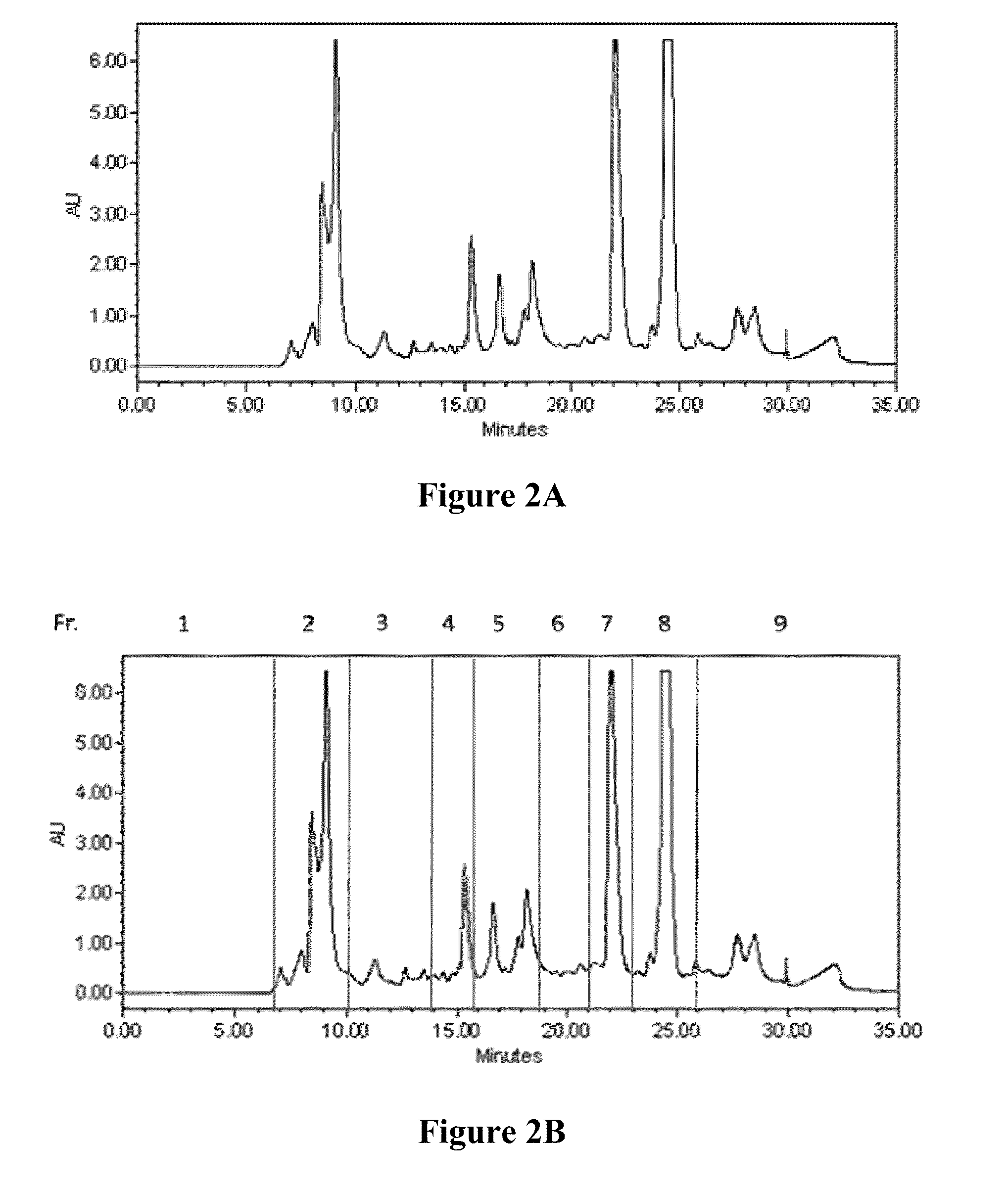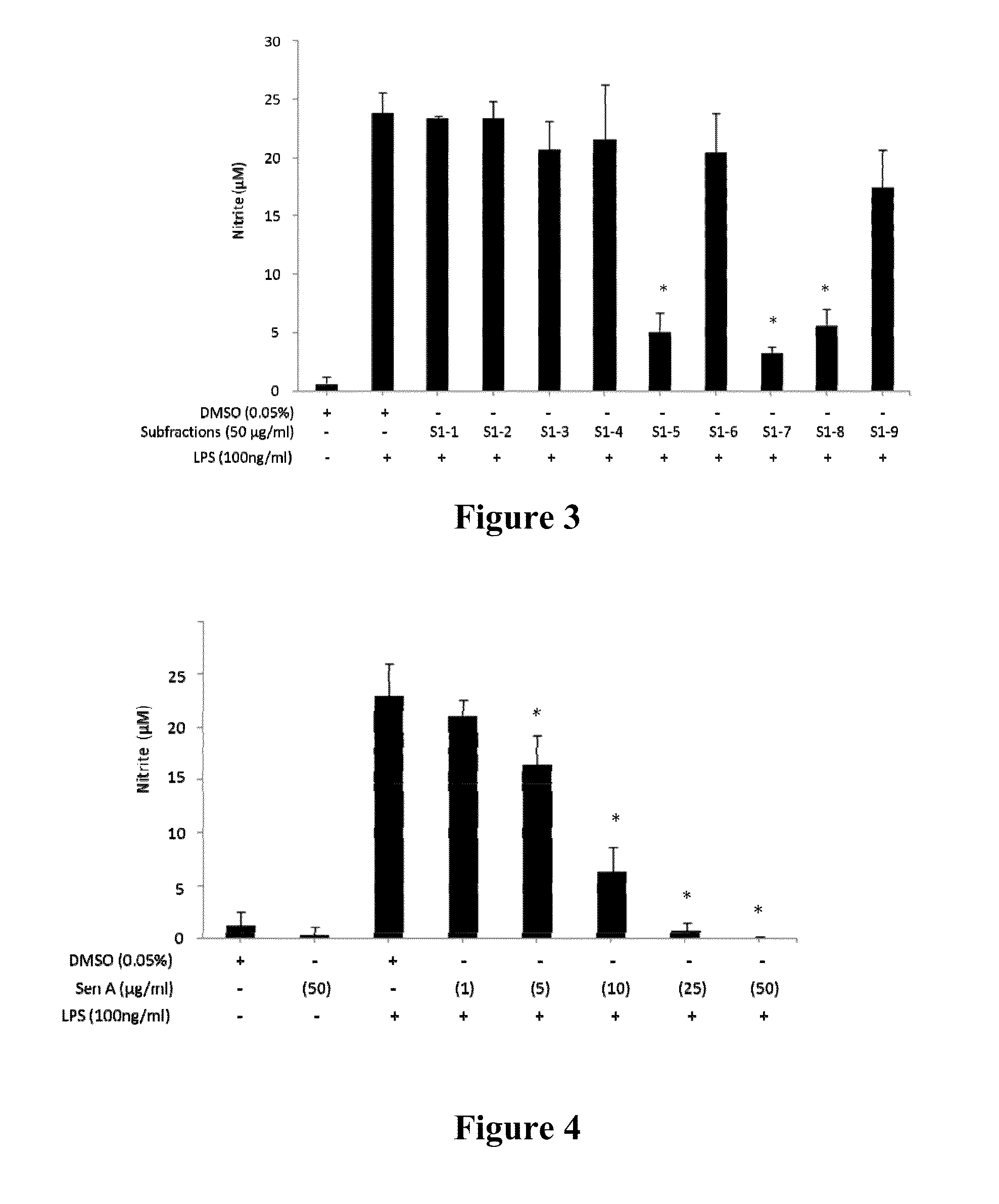Novel Therapeutic Methods for Treating Inflammation and Immune System Disorders
a technology for immune system disorders and new therapeutic methods, applied in immunological disorders, metabolism disorders, antibody medical ingredients, etc., can solve the problems of organ failure and even death, deleterious effects to the host, and overproduction may have adverse effects on the host, and achieve the effect of inhibiting cell death
- Summary
- Abstract
- Description
- Claims
- Application Information
AI Technical Summary
Benefits of technology
Problems solved by technology
Method used
Image
Examples
example 1
Extraction and Isolation of Bioactive Compounds from Ligusticum chuanxiong
[0138]Ligusticum chuanxiong (LCX) obtained from Purapharm International (H.K.) Ltd. is ground into powder. Methods for extracting bioactive compounds are shown in FIG. 1 and illustrated as follows.
[0139]In the first method, LCX powders are soaked in 95% ethanol at room temperature with continuous sonication for 30 minutes. After the extract is concentrated using a Rotavapor (Büchi), it is suspended in water and then partitioned sequentially with hexane, ethyl acetate and then butanol. Three fractions, namely LCX-1-Et-H, LCX-1-Et-EA and LCX-1-Et-Bu, are obtained.
[0140]In the second method, LCX powders are heated in 70% ethanol under continuous reflux for 30 minutes. After the extract is concentrated using a Rotavapor (Büchi), it is suspended in water, and partitioned with dichloromethane (DCM). Two fractions, namely LCX-2-Et-D (the DCM fraction) and LCX-2-Et-W (the water faction), are obtained.
[0141]In the thi...
example 2
Effect of Bioactive Extracts on Nitric Oxide Production
[0143]The effect of each extract on nitric oxide production is evaluated according to the procedures illustrated as follows. Briefly, murine microglia cell line BV-2 is maintained in Dulbecco's modified Eagle's minimum essential medium (DMEM) supplemented with 10% FBS and 1% penicillin and streptomycin (Invitrogen Life Technologies, Carlsbad, Calif.) at 37° C. in a humidified atmosphere with 5% CO2 in warm air.
[0144]0.1 M cells / ml BV-2 cells are seeded in 24-well plates (0.5 ml in each well). Cells are treated with 0.05% DMSO; 0.05% DMSO and 100 ng / ml LPS; or 100 ng / ml LPS and 50 μg / ml of an LCX extract for 18 hours, respectively. The culture supernatant is collected. The nitric oxide level is measured using the Griess reagent according to standard manufacturer's instructions (Sigma Aldrich, St. Louis, Mo.), and assessed using the standard sodium nitrite curve.
[0145]The results reveal that LCX-1-Et-EA extract inhibits nitrite pr...
example 3
Effect of Senkyunolide A and Z-Ligustilide on LPS-Induced Nitric Oxide Production
[0149]The effect of senkyunolide A (Sen A) and Z-ligustilide (Z-Lig) at various concentrations on LPS-induced nitrite production is further evaluated in this Example. Briefly, 0.1 M cells / ml BV-2 cells are seeded in 24-well plates (0.5 ml in each well). Cells are treated with 0.05% DMSO; 0.05% DMSO and 100 ng / ml LPS; 50 μg / ml Sen A / Z-Lig; or 100 ng / ml LPS and Sen A / Z-Lig at a concentration of 1 μg / ml, 5 μg / ml, 10 μg / ml, 25 μg / ml, and 50 μg / ml for 18 hours, respectively. The culture supernatant is collected. The nitric oxide level is measured using the Griess reagent according to standard manufacturer's instructions (Sigma Aldrich, St. Louis, Mo.), and evaluated using the standard sodium nitrite curve.
[0150]The results, as shown in FIGS. 4 and 5, reveal that the application of either Sen A or Z-Lig at a concentration of above 5 μg / ml significantly inhibits nitrite production. Specifically, Sen A at a con...
PUM
| Property | Measurement | Unit |
|---|---|---|
| enantiomeric excess | aaaaa | aaaaa |
| enantiomeric excess | aaaaa | aaaaa |
| enantiomeric excess | aaaaa | aaaaa |
Abstract
Description
Claims
Application Information
 Login to View More
Login to View More - R&D
- Intellectual Property
- Life Sciences
- Materials
- Tech Scout
- Unparalleled Data Quality
- Higher Quality Content
- 60% Fewer Hallucinations
Browse by: Latest US Patents, China's latest patents, Technical Efficacy Thesaurus, Application Domain, Technology Topic, Popular Technical Reports.
© 2025 PatSnap. All rights reserved.Legal|Privacy policy|Modern Slavery Act Transparency Statement|Sitemap|About US| Contact US: help@patsnap.com



